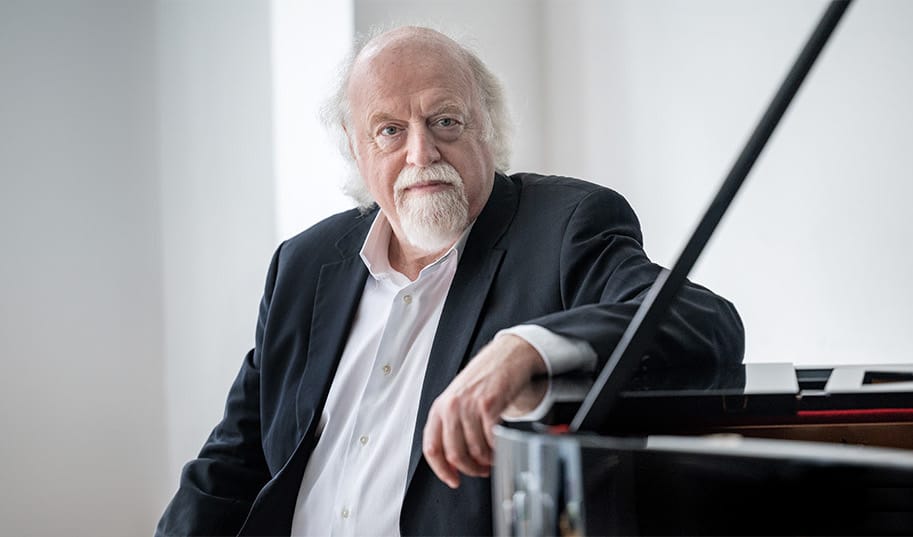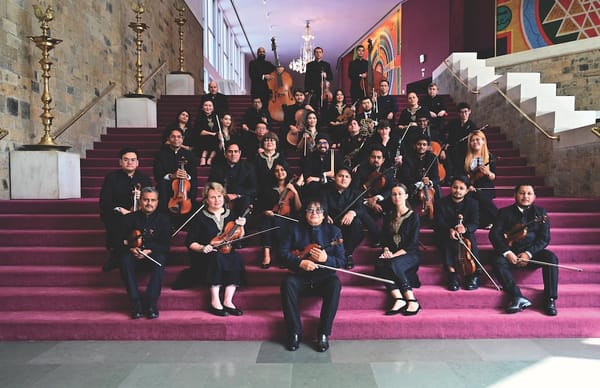The Protean Pianist
Ahead of his concerts at the NCPA, the distinguished classical pianist Peter Donohoe talks to ON Stage about how the piano became his instrument of choice, what concert-giving is all about and the works he is looking forward to performing in India.

Fire and passion. Thunder and steel. Delicacy and beauty. Jaw droppingly virtuoso stuff. These are but some of the words critics have used to describe performances by British pianist Peter Donohoe, who is believed by many to be one of the greats of our time.
Born in Manchester in 1953, Donohoe has—since his silver medal win at the 1982 International Tchaikovsky Competition—built a career encompassing a wide repertoire covered in recitals and recordings alike. His performances, marked by formidable technique and stylistic versatility, have been with every major London orchestra and other ensembles from across the world, like the Vienna Symphony, Czech Philharmonic, St. Petersburg Philharmonia, the Dresden Philharmonic and Munich Philharmonic. Back in 1974, a young Donohoe was the timpanist for conductor Simon Rattle’s first performance of Stravinsky’s The Rite of Spring; it was also the first of a long list of engagements that the two have since collaborated on, including notable recordings and worldwide concerto performances, the latest among them being Donohoe’s appearance as soloist during the 2023/24 season of the London Symphony Orchestra with Rattle on the podium.
Donohoe has worked with other illustrious maestros including Lorin Maazel and Yevgeny Svetlanov, as well as next-generation conductors like Gustavo Dudamel. Be it works of Messiaen or Mozart, Tchaikovsky or Grieg, Donohoe continues to bring fresh perspectives to his performances. From his tour of South America earlier in March and recitals in Scotland and Slovakia in July, he is now India-bound for his debut here. Later this month at the NCPA, he will perform and conduct the SOI Chamber Orchestra in a programme featuring Edvard Grieg’s Holberg Suite, Benjamin Britten’s Simple Symphony and Edward Elgar’s work for strings, originally composed in 1905 for the London Symphony Orchestra when it was newly formed.
Excerpts from a conversation with the multi-faceted Donohoe:
ON Stage: You studied violin, viola, clarinet and tuba at music school but were drawn to the piano much earlier. Could you tell us more about it?
Peter Donohoe: The piano was the first instrument of which I became aware as a child. My mother had played regularly before I was born, resulting in there being a pretty good piano in our home, and my grandparents—my mother’s parents—were very musically aware and encouraging. However, until I was about 24, I was not fully convinced that I was good enough on the piano for a solo career, but I was always determined to be a musician of some sort—hence the variety of other instruments that you mention.
I was actually quite a good violist; I took that instrument up at the age of 13, as I did not take to the violin very well. But I was merely experimenting with the other instruments—the clarinet and tuba— to get an understanding of at least one instrument from each department of the orchestra with a view to composing. Then I struck lucky with timpani and percussion, which at the time I got so involved in, that I became a fully committed professional freelance player. Eventually I saw the light and decided to take the plunge, give up all other instruments and aim fully for the life of a solo pianist.
OS: Who inspired you along the way to make piano the instrument of choice?
PD: Amongst many from my very early childhood, I will be forever indebted to my mother for her talent, my father for his vision, my primary schoolteachers—particularly our class music teacher—and my early piano teachers. All of them were extraordinarily inspiring and encouraging, despite my wayward attitude to the piano itself. And then, nearly 20 years later, to the conductors who asked me to work with them, intimately inspiring me to commit myself to the life I have had since.
One of those who influenced me greatly was my A-level music teacher, whose interest in the music of the 20th century led to my awareness and deep love for Messiaen’s music. This resulted in 1977 and ’78 in my studying with Olivier Messiaen and his wife Yvonne Loriod in Paris—an extraordinary revelation.
And last but possibly the greatest influence came from my main piano teacher, Derek Wyndham, who spent the years from when I was 14 to 24 with me, and whose patience and tenacity perhaps contributed the most to my artistic life as it is now.
OS: Please talk about your method of learning a piece and readying it for performance.
PD: Everyone’s personal method of successfully learning a new piece, by definition, has to be different to everyone else’s. My own—assuming the music in question is not one of those works that I have known since my early childhood—is to assimilate it in the form of a jigsaw, to analyse it, then to home in on the most difficult aspects, including technically awkward moments and then to gradually join everything up. To take enough time to learn a piece, and never to rush into it, is important. As far as memorising is concerned, it should only ever be an issue if remembering it contributes positively towards the performance. Sometimes it genuinely does not, particularly if the artiste is older, and then the performance greatly benefits from being performed with music. However, I do greatly value Sir Adrian Boult’s response to the issue, which was that he was very happy to work with a soloist who used the music but didn’t have to.
OS: Your diary online looks back in detail at momentous events in your life, such as your win at the International Tchaikovsky Competition in 1982. These are visually rich stories of a time worthy of being shared. You also mention the idea of publishing a book someday.
PD: They say that there is a book in everyone, and perhaps my life across a period in which the music world—indeed the world and the role of music in it— has changed so momentously (I am thinking of the end of the Cold War, in particular), it could possibly be of interest from a historical perspective. One day, when I don’t have as much music to practise…
OS: What are the key pieces of advice that you would like to offer to aspiring musicians?
PD: Remember that your role is to communicate to the listener the greatness of the music and its composer. Ideally, it is not about you, but you are the vessel through which the composer’s music is passed to your public. Nor is concert-giving about snobbery, either on the part of the listener or yourself—specifically that playing in the world’s most celebrated venues is not the be all and end all—in fact, it matters nothing if you use it to look down on other artistes, other venues or other cultures. We are all in it together, against a prevailing wind of the commercialisation of the arts.
OS: You will perform with and conduct the SOI Chamber Orchestra in a very special programme and give a piano recital later this month. Is there anything you would like to share with our readers ahead of these concerts?
PD: The main thing is the greatness of the music. British composers have always had a particular penchant for writing for string ensembles, and the Britten and Elgar works sublimely attest to that. Elgar’s Introduction and Allegro for Strings, Op. 47, is one of my personal favourites with its sublime optimism, requiring stunning virtuosity from the players. I am looking forward to it enormously.
There is a certain Britishness about some aspects of Grieg’s wonderful Holberg Suite. It must be remembered that Grieg’s Piano Concerto, being one of the most important landmarks in Western classical music, was first popularised in Britain, thereby cementing a strong link between Norwegian music and British audiences. Ludvig Holberg was of course such a significant influence over Scandinavian culture that Grieg felt openly indebted to him and wrote the extremely inspired Holberg Suite as a homage to the great writer. This—combined with Grieg’s natural and original melodic style, brilliant writing for strings and a certain element of pastiche towards the Baroque era—makes this work an absolute classic.
Despite the hugely popular repertoire from all periods of music for string ensemble, there is a surprising dearth of concerti for solo instruments and string orchestra. However, at least three out of Mozart’s 27 piano concertos can be played by piano and strings. Of these three, Piano Concerto No. 12 in A major, K. 414 seems to me to be one of the most inspired concertos in the whole repertoire, demanding great intimacy and collaboration between all those involved. It is always a pleasure to play this work, whose melodic lines and beautiful moods and textures are almost unsurpassable.
By Beverly Pereira. This piece was originally published by the National Centre for the Performing Arts, Mumbai, in the October 2024 issue of ON Stage – their monthly arts magazine.





